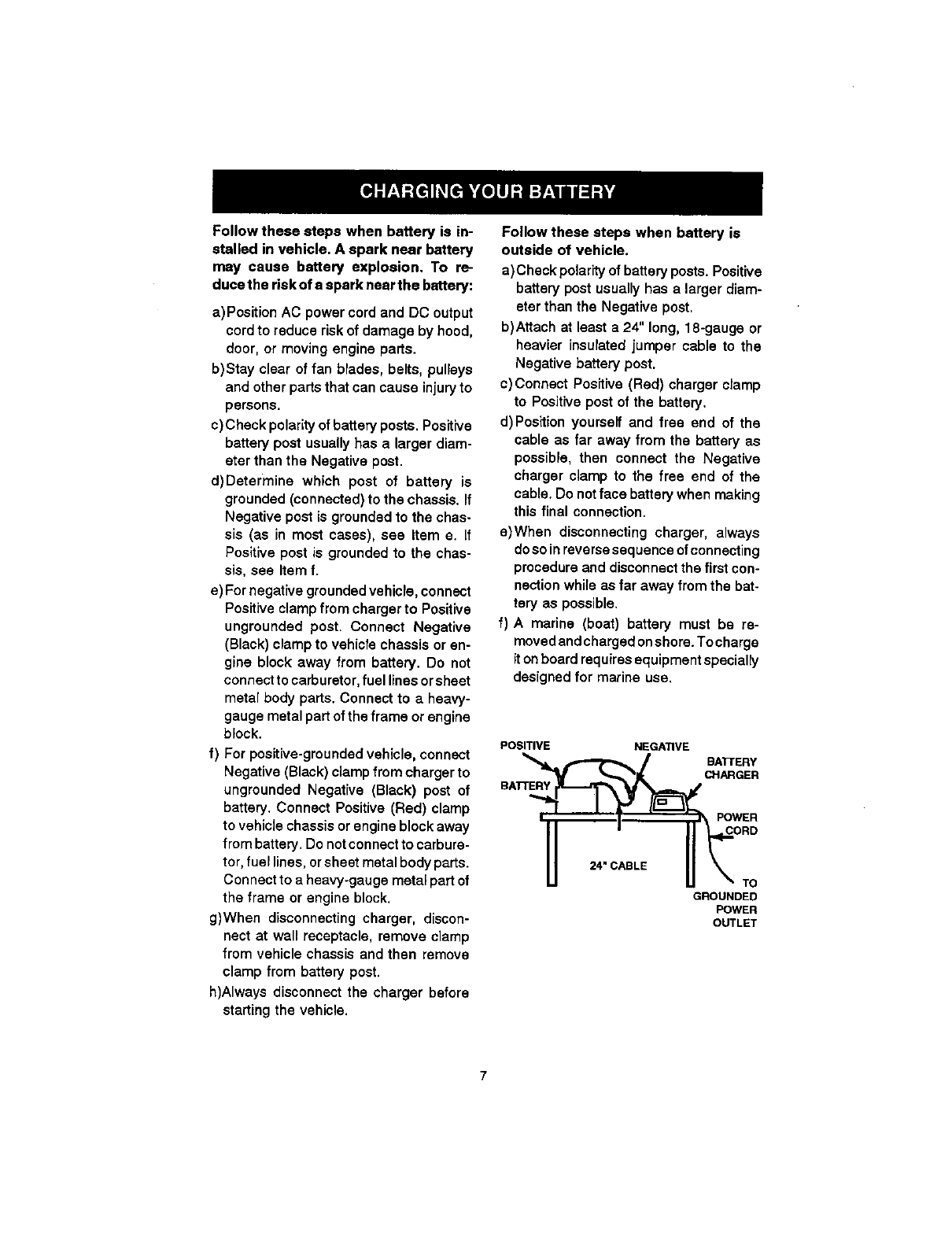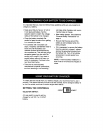
Follow these steps when battery is in-
stalled in vehicle. A spark near battery
may cause battery explosion. To re-
duce the risk of a spark near the battery:
a)Position AC power cord and DC output
cord to reduce risk of damage by hood,
door, or moving engine parts.
b)Stay clear of fan blades, belts, pulleys
and other parts that can cause injuryto
persons.
c) Check polarity ofbattery posts. Positive
battery post usually has a larger diam-
eter than the Negative post.
d)Determine which post of battery is
grounded (connected) to the chassis. If
Negative post is grounded to the chas-
sis (as in most cases), see Item e. If
Positive post is grounded to the chas-
sis, see Item f.
e) For negative grounded vehicle, connect
Positive clamp from charger to Positive
ungrounded post. Connect Negative
(Black) clamp to vehicle chassis or en-
gine block away from battery. Do not
connect to carburetor, fuel lines orsheet
metal body parts. Connect to a heavy-
gauge metal partofthe frame or engine
block.
f) For positive-grounded vehicle, connect
Negative (Black) clamp from charger to
ungrounded Negative (Black) post of
battery. Connect Positive (Red) clamp
to vehicle chassis or engine block away
from battery. Do notconnect to carbure-
tor, fuel lines, orsheet metal bodyparts.
Connect to a heavy-gauge metaFpart of
the frame or engine block.
g)When disconnecting charger, discon-
nect at wall receptacle, remove clamp
from vehicle chassis and then remove
clamp from battery post.
h)Always disconnect the charger before
starting the vehicle.
Follow these steps when battery is
outside of vehicle.
a)Check polarity of battery posts. Positive
battery post usually has a larger diam-
eter than the Negative post,
b)Attach at least a24" long, 18-gauge or
heavier insulated jumper cable to the
Negative battery post.
o) Connect Positive (Red) charger clamp
to Positive post of the battery.
d)Position yourself and free end of the
cable as far away from the battery as
possible, then connect the Negative
charger clamp to the free end of the
cable. Do not face battery when making
this final connection.
e)When disconnecting charger, always
doso inreverse sequence of connecting
procedure and disconnect the first con-
nection while as far away from the bat-
tery as possible.
f) A marine (boat) battery must be re-
moved and charged onshore. To charge
it onboard requires equipment specialty
designed for marine use.
POSITIVE NEGA'nVE
GROUNDED
POWER
OUTLET












